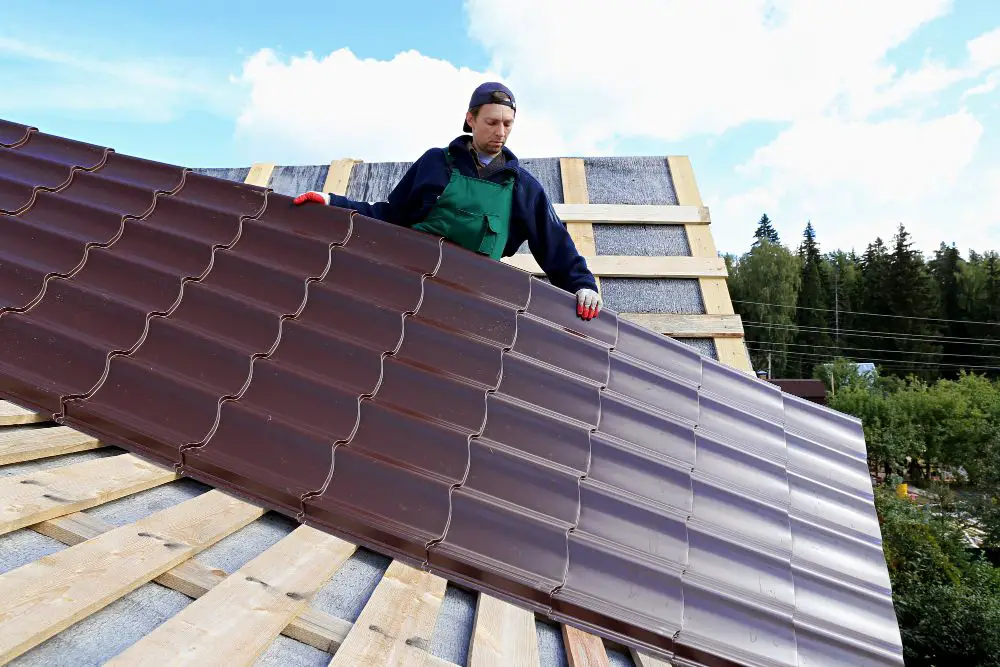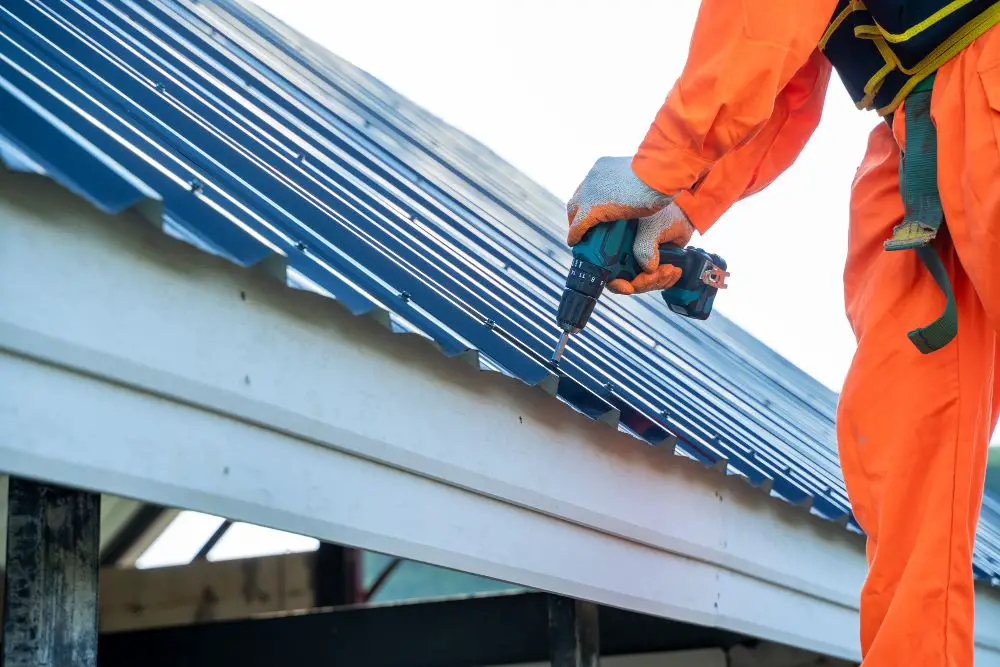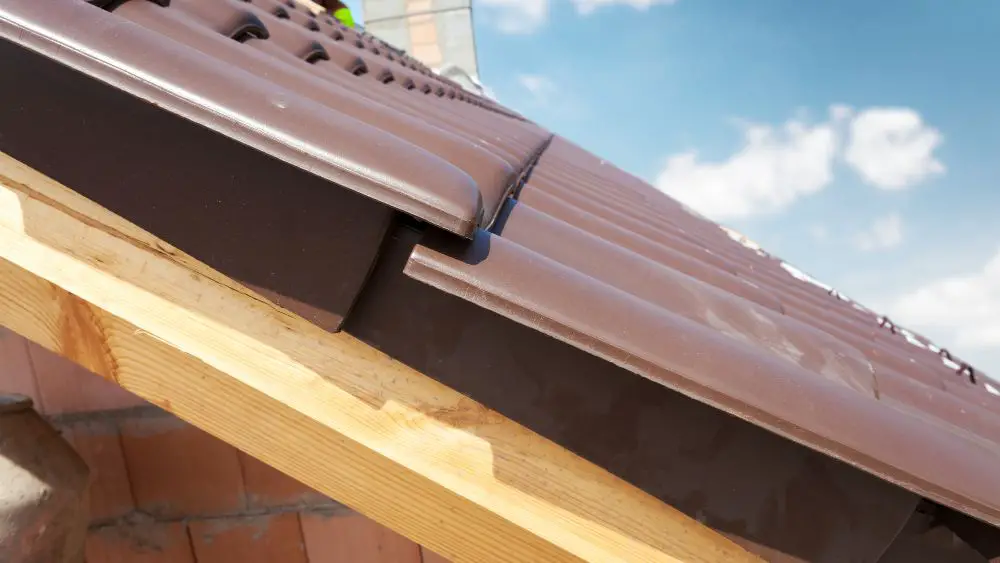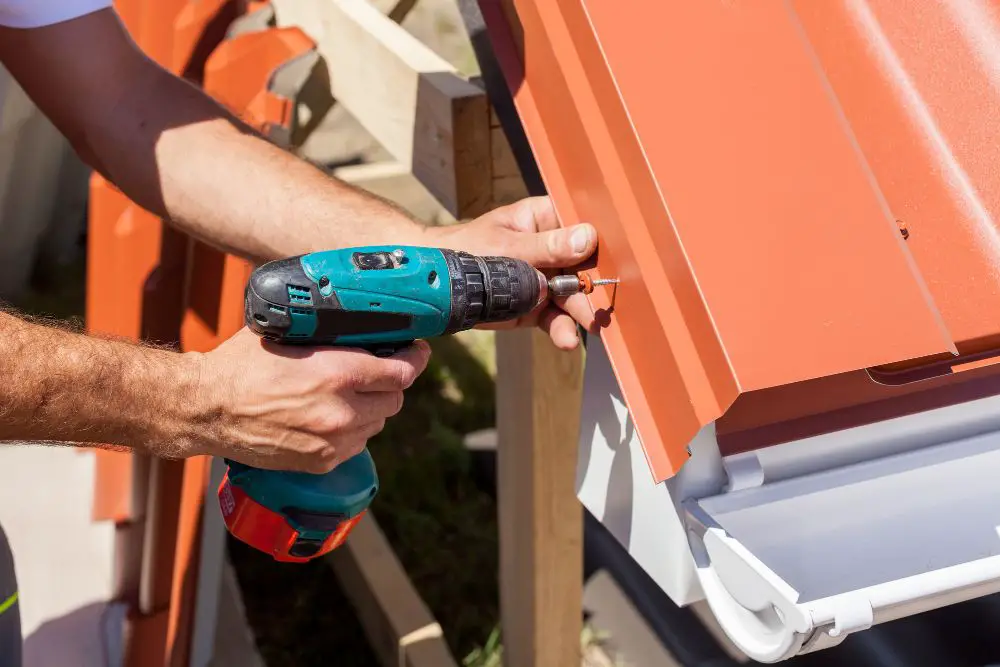You’re tired of the constant maintenance of your old roof. You’re thinking about getting a new long-term roof. You’re looking for something that’s not only cost-efficient but also durable, long-lasting and stylish. Does this sound like you? If so, metal roofing is a smart decision and the answer to your roofing problems.
Contents
Metal roofs are increasingly popular and are available in different styles and materials. Metal roofs not only last for a long time but require very little maintenance as well.
To get started with metal roofing, you must first understand the basics, particularly the differences in metal gauge. This article will explain the difference between 26 vs. 29-gauge metal roofing. It will also detail some of the different materials your new metal roof can be made out of, as well as the advantages and disadvantages of these materials. The article will end with some advice on how to put up your new metal roof, as well as the applications of metal roofs in other types of buildings.
What Is Metal Roof Gauge?
Metal roofing gauge refers to the thickness of the metal used for roofing. The most common metal roof gauges are 22, 24, 26 and 29. The higher the number of the metal roof gauge, the thinner the metal. 22-gauge metal roofs are the thickest, while 29-gauges are the thinnest.

Thicker gauges are more expensive but are more durable. A thicker gauge can protect your roof from all weather conditions, including withstanding a tremendous amount of snow.
Thinner gauges are inexpensive, but you cannot use them in areas that receive adverse weather conditions such as heavy rain, high winds, and snow. Thinner gauges are popular in most of the United States, and thicker gauges are common only in those states that regularly experience adverse weather conditions.
26 vs. 29-Gauge Metal
26 and 29-gauge metal roofs are among the most popular, and either is suitable for your new roof. Both types of metal gauge are fire resistant and do not rust easily.
To help you make an informed decision, let’s discuss the differences between 26 and 29-gauge metal roofing including thickness, durability, appearance, cost and lifespan.
Thickness
The 26 gauges are thicker than the 29 gauges and can stand up to more punishment from mother nature. Below is the standard thickness of the two gauges for iron and steel sheets:
| Gauge | 26 | 29 |
| Thickness | 3/160 inches | 9/640 inches |
Durability
The 29-gauge metal roofs cannot withstand heavy hail, snow and wind. If you use these metal roofs in a location where there is regular snowfall there will be a chance of water leakage. Regular heavy winds may also damage your roof or blow away pieces of it, as the metal is very thin.
26-gauge metal roofs are safer in locations with regular snowfall or heavy winds. The thicker metal can withstand extreme weather conditions and can also protect your home against rodents.
Appearance
The appearance of 26 and 29-gauge metal roofs is similar. The type of metal gauge cannot be distinguished just by looking at the roofs. The materials used in making the gauge is what will affect the appearance.
If there is a problem in installation such as workers incorrectly tightening the screws, it will result in waves and bumps in the metal sheet, which is called oil canning. Oil canning becomes more prominent in 29-gauge metals as compared to 26-gauge metals.
Cost
The 26-gauge metal roofs are thicker, and therefore more expensive than the 29 metal roof gauges.
|
Gauge Metal |
Price per square feet |
|
26 Gauge metal roofing price |
$1.75 to $4 |
|
29 Gauge Metal roofing price |
$1.75 to $3 |
| 24 Gauge Metal Roofing Price |
$5 to $7 |
Practically speaking, the difference in cost is not significant. For example, a 50 sq. ft. roof of 26 gauge sheet metal might cost you between $30,000-$40,000. You may only save a couple thousand by using 29-gauge metal instead.
Lifespan
If you are considering a metal roof, you are probably wondering how long a 26-gauge metal roof will last. The thicker material of a 26-gauge metal roof won’t corrode or rust easily. These types of roofs can withstand a wind speed of more than 14mph and can shed ice and snow quickly. The lifespan of a 26-gauge metal roof is more than fifty years.
So how long will a 29-gauge metal last? 29-gauge metal consists of very thin metal, so it only lasts about 20 to 25 years.
Weight
These are the standard weights of the three most common gauges for iron and steel sheets:
|
Gauge Metal |
Weight per square feet in ounces |
|
26 Gauge metal roofing weight |
12 |
| 29 Gauge metal roofing weight |
9 |
| 24 Gauge metal roofing weight |
16 |
Purlin Spacing
The purlin spacing for 26-gauge metal roofing is 4.5 feet. For 29-gauge metal, the purlin spacing is 2 feet.
When To Use 26-Gauge Metal Roofs?
- It’s best to use 26-gauge metal roofs in areas which regularly experience snow, hail and wind storms.
- If you do not want to change your metal roofs again for a long time, 26-gauge is a great choice for your metal roof.
- If your building has open sides, such as a pole barn, then 26-gauge metal roofs are suitable.

When To Use 29-Gauge Metal Roofs?
- 29-gauge metal roofs are best suited for areas with a moderate climate.
- If you are looking for roofs for the short term, then choose 29-gauge metal.
- If you have a tight budget, then a 29-gauge is ideal.
Advantages of Metal Roofing
Lifespan
Metal roofs can last for more than 70 years. No other roofing material has as long a lifespan.
Durability
If you correctly install the metal roofs, then they can withstand wind of up to 150mph. Most metal roofs can resist snow for extended periods. Metal roofs also do not rust easily. To find out more about durability of your metal roof, check more how long does a metal roof last.
Less Maintenance
Metal roofs require less maintenance, but you should still inspect them at a regular interval.
Safety
Almost all metal roofs are fire-resistant. They will not catch fire easily.
Energy Efficient
Most metal roofs are energy efficient. They reflect the ultraviolet rays of the sun and keep your home cooler. A metal roof will indirectly reduce your electricity bill.
Environmentally Friendly
Metal roofs consist of recycled materials and are therefore less harmful to the environment. The materials of a metal roof can be reused when it is time for one to be replaced.

Increases Resale Value
If you use a good quality metal roof for your building it will increase the resale value due to the durability and longevity of metal roofs.
Varied Style and Colors
Metal roofing is available in various colors and styles. You can choose any type according to your aesthetic preferences.
Types of Metal Roofing
Metal roofing is available in many different materials. The most common metals used in roofing are zinc, aluminum, tin, and copper.
Tin
Tin is a classic material used for metal roofs. A metal roof made from tin will be a grey color and quite stylish. These roofs, however, corrode quickly with time. The color fades away after several years. Modern tin metal roofs are available with a steel coating that does not rust easily.
Zinc
Zinc metal roofing does not rust easily. Roofs made from zinc are bluish-grey and can last for70 to 100 years.
Steel
Steel metal roofing is quite common in new residential projects. They can be used in areas that usually receive extreme weather conditions like snowfall, hail, or excessive rain. Steel metal roofs last for 30 to 50 years. The most common type of steel roofing is galvanized steel, as it consists of steel and some layer of zinc. Another popular type of steel roofing is galvalume, which consists of steel with layers of aluminum, zinc and silicon. Steel metal roofs are economical in comparison to other metal roofs.
Manufacturers use paint while manufacturing the steel metal roofs to increase their lifespan and durability. Steel roofs are available in fastened panels, modular panels and standing seam.
Aluminum
Metal roofs made from aluminum are very light and can be used in coastal climates or environments prone to acid rain. You should not use these metal roofs in areas where there is excess snowfall or hail storms because these roofs can dent easily.
Manufacturers use special paint on these roofs to increase their durability. They usually last for 30 to 50 years.
Copper
Copper metal roofing is costly compared to other metal roofing and can be used in any climate. Copper roofs do not rust easily, so they will not require any coating. If you properly install them, then they can last for 200 years. Learn more on how long does a metal roof last.
How to Install Metal Roofing
Consider Safety
Safety should be the first criteria while installing a metal roof for your building. You should wear goggles and gloves when you work on the roof and be very careful while cutting the metal. There should not be any electrical cable on your roof during installation.
Always keep a ladder at the base of your roof so that you can immediately leave the roof if there is a problem. You must wear proper shoes while working on the roof. Having extra help during installation is always a good idea.
Different Types of Metal Roofing
As we have already discussed, many different types of metal roofs are available for sale, so choose one according to your preferences.

Measure Your Roof
When you plan to install a new metal roof on your house, you should correctly measure the roof area. You need to first measure the length from the rake of your roof to the edge of the eaves, then measure the width of your roof. Multiply the width by the length to calculate the area of one side of your roof.
To calculate the other side of your roof, multiply the result by two. Now you have the total area of your roof. With these measurements, you can now order the metal roofs directly for your house. Do not forget to order the screws and bolts along with them! The metal roof panels should have the same color as the screws.
Remove Your Old Roof
When you remove your old roof, you will be able to investigate the sheathing and any other problems you may not have known about. If your sheathing requires any improvement or needs to be changed, do it now.
Install Drip Edge
You need to install the drip edge on your eaves and the rake of your roof to direct the water to the gutter. You can use less than 2 inches of the nail and hammer it in to install the drip edges.
Install Metal Panels
Now install the metal panels on your roof. Read the manufacturer guidelines before fastening screws on your metal roofing. If you need to cut the metal panels, you will require a metal saw blade.
Cap the Ridge
Ridge is that portion of the roof where two roof panels meet. After the installation of all the metal panels, you need to fit the ridges by ridge cap. This step is necessary because a ridge cap can keep your roof dry and leak-free. It also increases the durability of your roof.
Applications of Metal Roofing
Commercial Buildings
As most metal roofs can withstand various environmental conditions, they can be used in commercial buildings like schools, colleges, restaurants, stores, offices and many other commercial buildings. The longevity of metal roofs makes them a great choice for commercial construction.
Residential Projects
Metal roofs are quite common in the residential market. Once the homeowner installs the metal roofs in his or her house, they do not have to worry about replacing them again for quite some time. Metal roofs are also ideal for homeowners as they require significantly less maintenance than other forms of roofing.
Architectural Projects
Metal roofing can be bent into a desired shape and size, so architects often use metal roofing in their projects.
Agricultural Buildings
Metal roofs are becoming more popular for use in agricultural buildings as they are durable and aesthetically-pleasing to look at.
Conclusion
If you are planning to upgrade your roof for the long term, you should choose a metal roof. There are many advantages to metal roofing, and the variability of materials and designs makes it ideal for every kind of person. You must be sure to properly install the metal roofs on your home, as improper installation can create leakage problems.
The thickness of a metal roof plays a very important role. This article discusses 26 vs. 29-gauge metal roofing in detail, and now that you know the difference between these two gauges, you can choose the correct gauge according to your geographical location and price target.
Hi, I’m Jim. I was a roofing constructor for 20 years, before deciding to start myrooff.com and gather the best content about roofing. I love woodworking and construction and it was only natural for me to start this passion project of mine. Thank you for visitng.

